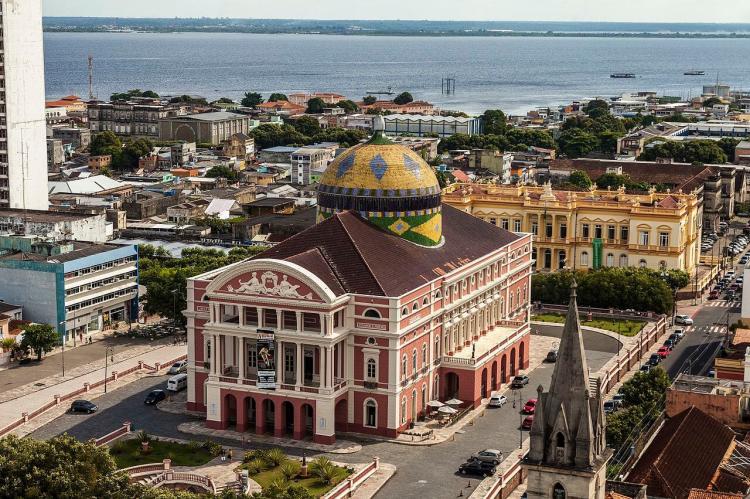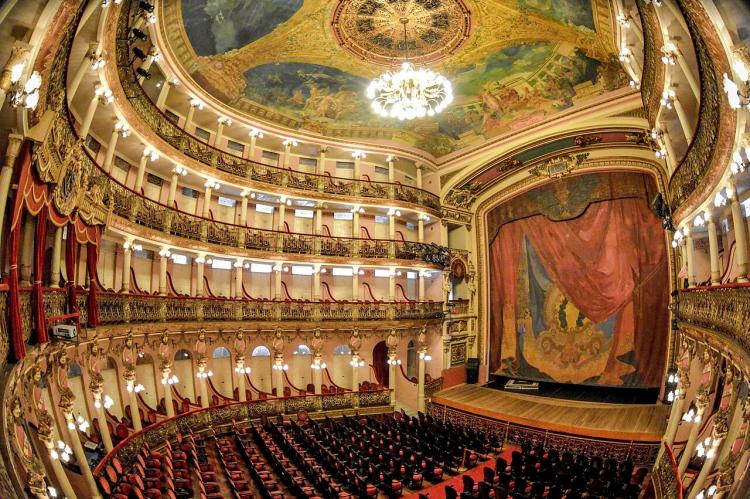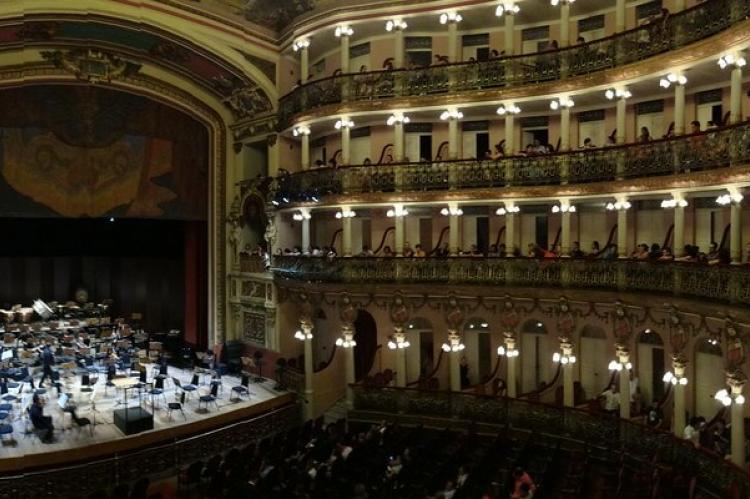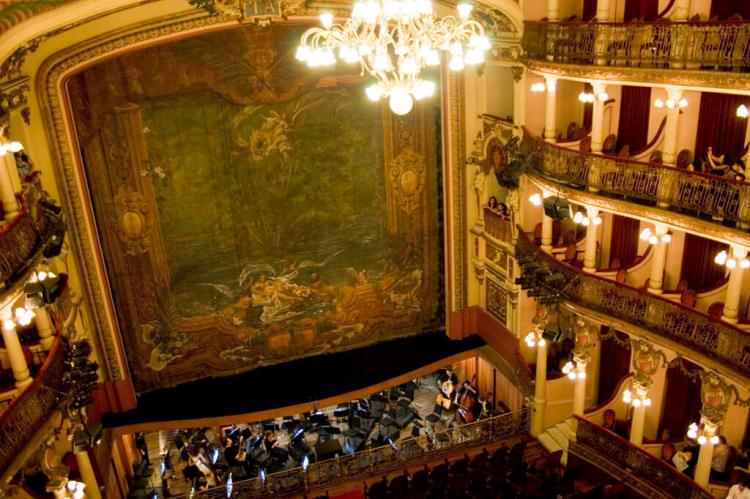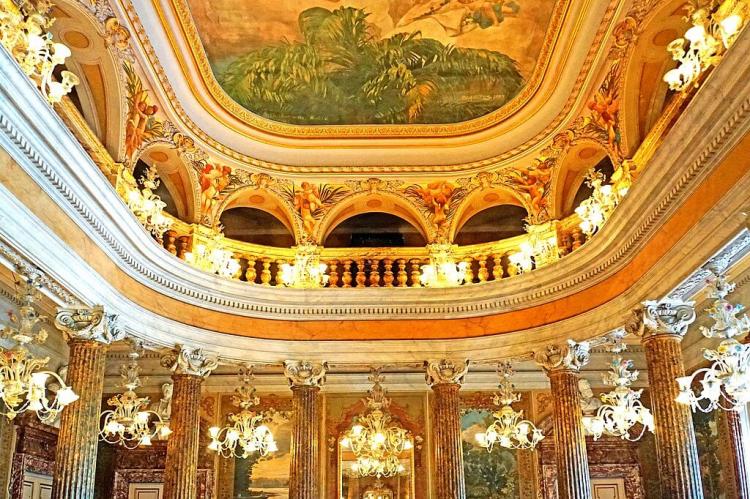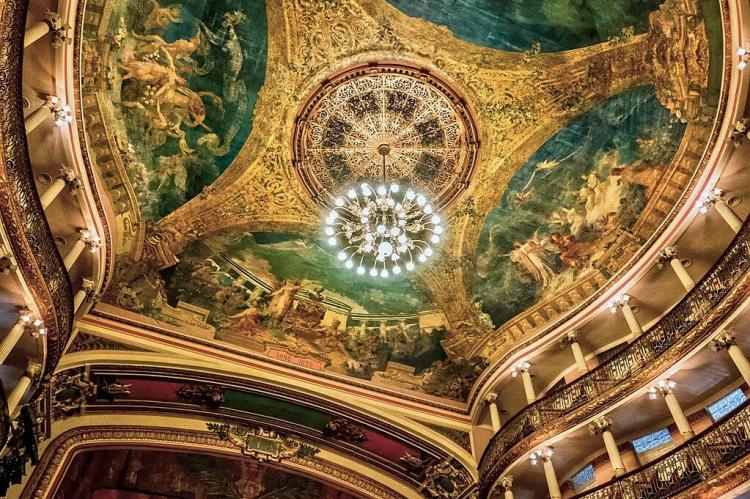The Magnificent Teatro Amazonas: A Jewel in the Heart of the Amazon
Deep within the lush embrace of the Amazon Rainforest stands the remarkable Teatro Amazonas, a testament to human ingenuity and artistic expression. It took over 15 years to construct the theater, with artists, designers, and materials imported from Europe, to create a one-of-a-kind cultural institution.
Teatro Amazonas: A Theatrical Gem in the Rainforest
Deep within the lush embrace of the Amazon Rainforest stands the remarkable Teatro Amazonas, a testament to human ingenuity and artistic expression. It took over 15 years to construct the theater, with artists, designers, and materials imported from Europe, to create a one-of-a-kind cultural institution. This iconic opera house, situated in the bustling city of Manaus, Brazil, is a true architectural masterpiece. Its grand neo-classical façade and exquisite interiors captivate all who enter its doors.
The Monumental Task of Construction
Constructed during the height of the Amazon rubber boom in the late 19th century, the Teatro Amazonas was envisioned as a "jewel" in the heart of the rainforest, reflecting the wealth and ambition that characterized the region during that prosperous era.
The construction of the Teatro Amazonas was a truly monumental undertaking that spanned over 15 years and required the coordination of artists, designers, and materials from across Europe. The initial proposal for the opera house was made in 1881 by Antonio Jose Fernandes Júnior, a member of the local House of Representatives, who envisioned a grand cultural institution that would serve as a "jewel" in the heart of the Amazon.
Construction on the neo-classical-styled theater began in 1884, but the process was often slow and arduous, with several stops and restarts between 1885 and 1892. The sheer scale and ambition of the project were evident in the materials and craftsmanship imported from Europe to bring the Teatro Amazonas to life.
The roofing tiles, for example, were sourced from Alsace, while the steel walls were brought in from Glasgow, Scotland. The striking Carrara marble used for the stairs, statues, and columns was quarried in Italy and shipped thousands of kilometers to Manaus. The theater's 198 chandeliers, including the 32 exquisite Murano glass pieces, were meticulously crafted and imported from Italy.
The interior of the Teatro Amazonas was no less impressive, with the furnishings and decorative elements designed in the lavish Louis Quinze style and imported from France. The Italian artist Domenico de Angelis the Younger painted the auditorium's ceiling panels. At the same time, the stunning curtain depicting the "Meeting of the Waters" was created by the Brazilian artist Crispim do Amaral in Paris.
The crowning glory of the Teatro Amazonas was the dome, which was covered with 36,000 hand-painted ceramic tiles in the colors of the Brazilian national flag. This striking architectural feature, visible from miles away, was a testament to the pride and ambition that drove the construction of this remarkable cultural institution.
The sheer scale and complexity of the Teatro Amazonas' construction is a testament to the vision, determination, and technical prowess of those who brought it to life. The import of materials and artistry from across Europe and the challenges of building such a grand structure in the heart of the Amazon make the Teatro Amazonas a true engineering and architectural marvel.
A Fusion of European Grandeur and Amazonian Charm
The architectural style of the Teatro Amazonas is considered a prime example of the Renaissance Revival, with its ornate façade, grand arched entryways, and soaring dome. The theater's interior is equally impressive, boasting opulent furnishings in the Louis Quinze style, intricate ceiling panels painted by Italian artist Domenico de Angelis the Younger, and a stunning curtain depicting the "Meeting of the Waters" – a natural phenomenon where the dark waters of the Río Negro and the pale waters of the Solimões River flow side by side without mixing.
The attention to detail and sheer scale of the project are astounding. The theater's 198 chandeliers, including 32 exquisite Murano glass pieces, were imported directly from Italy. The dome itself is covered with 36,000 hand-painted ceramic tiles in the colors of the Brazilian national flag, a testament to the pride and ambition that drove the theater's construction.
A Turbulent History and Resurgence
Both triumph and adversity have marked the Teatro Amazonas' history. Inaugurated in 1896 with the inaugural performance of Amilcare Ponchielli's opera "La Gioconda," the theater enjoyed a brief period of grandeur and prestige as the cultural heart of the Amazon Basin. However, as the rubber trade dwindled and the region's wealth declined, the theater eventually fell into disrepair, closing its doors and remaining dormant for nearly a century.
It wasn't until the early 2000s, when the provincial government allocated funds to revive the Teatro Amazonas, that the theater experienced a remarkable resurgence. It is once again a vibrant hub of cultural activity, hosting the annual Amazonas Opera Festival and performances by the esteemed Amazonas Philharmonic Orchestra, choirs, concerts, and a yearly film festival.
The Significance of the Teatro Amazonas
The Teatro Amazonas is a testament to the enduring human spirit and the power of art to transcend time and place. This remarkable opera house, built in the heart of the Amazon Rainforest, is a cultural landmark and a symbol of the resilience and creativity that have defined the region for generations.
Beyond its architectural and artistic significance, the Teatro Amazonas also holds immense historical and social importance. Its construction during the rubber boom era reflects the profound economic and cultural transformations that swept through the Amazon Basin. At the same time, its recent resurgence represents the region's ongoing efforts to preserve and celebrate its unique identity in the face of modern challenges.
The continued preservation and revitalization of the Teatro Amazonas are a testament to the enduring spirit of the Amazon. This region has captivated the imaginations of people around the world. As a cultural and architectural gem in the heart of the rainforest, the Teatro Amazonas will continue to inspire and delight audiences for generations to come.
